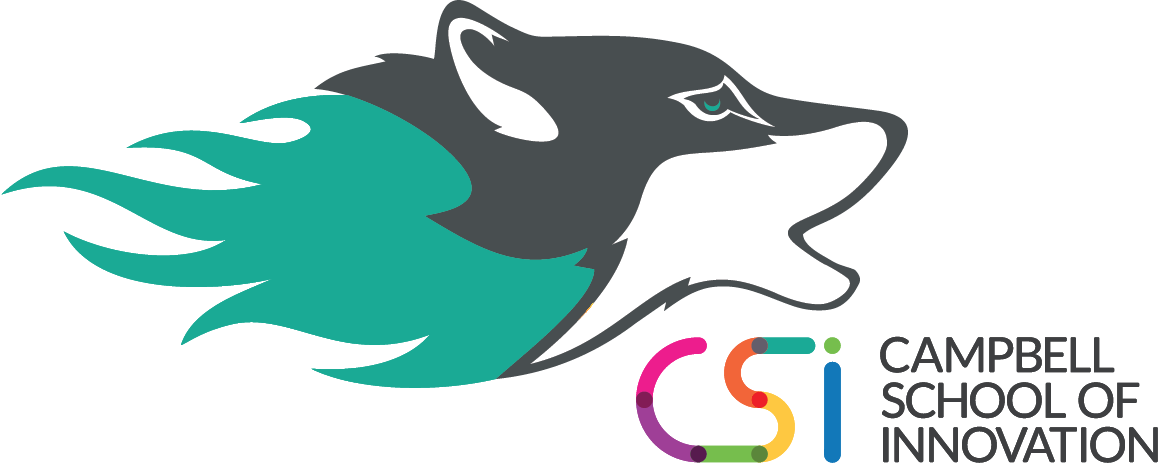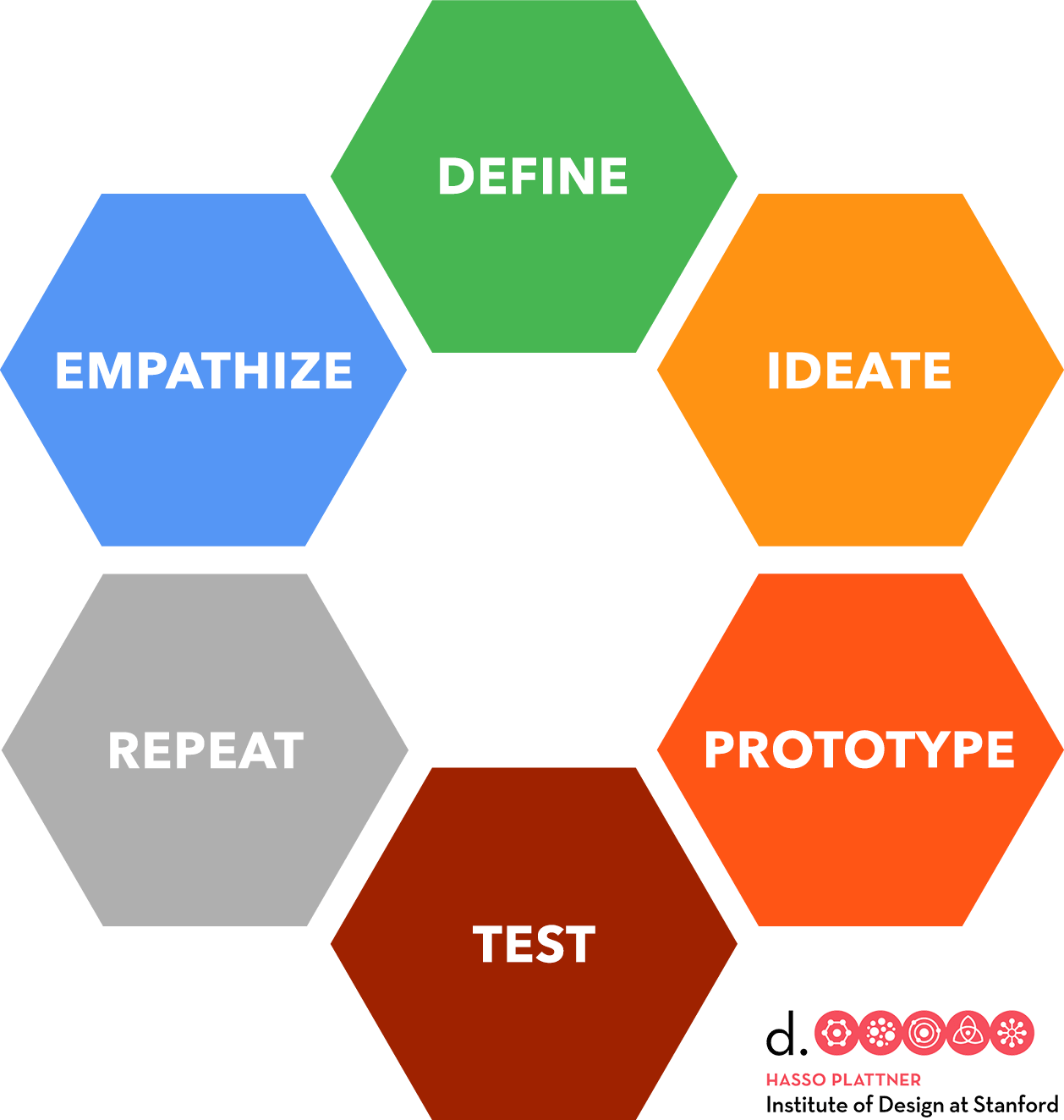-
-
This page is Public
-
Public
-
-
This page is Public
-
Configure
Innovation
Innovation @ CSI
Learning by Design
From an innovative curriculum to creative learning spaces, Campbell School of Innovation (CSI) will offer a different way to do school. Preparing students for an undefined and fast-paced future requires that we reevaluate traditional education models and question what really works for today’s students.
At CSI, students will focus on learning how to learn as they become creative, flexible, community-focused leaders of change. Design thinking, growth mindset and the “Four Cs of Learning” will provide the framework by which our students will seek, learn, and lead.
What is Design Thinking?
Design thinking is an empathy based, creative problem solving process embraced by innovators around the world for addressing complex problems. At its heart, it nurtures the ability to see a situation from someone else's point of view, engineer a solution, and then test and refine your solution based on feedback. It is one approach CSI students will use to master the California Common Core State Standards and build the adaptable thinking skills they will need for success in the 21st century workforce.
The d.school, a design thinking school at Stanford University, has developed a now well-known process that outlines the core elements of design thinking. It may look linear, but design thinking is messy! You can jump into the process at any point and will find yourself moving back and forth between steps as you work toward a solution.
Example: The ABC Nightline news program illustrated the design thinking methodology in a 1999 segment called The Deep Dive. The story follows a team from the global design company IDEO as it creates a better shopping cart.
Working with The Tech Museum of Innovation in San Jose, we have developed a process of inquiry that reflects the design thinking process in terms of our motto: “Seek. Learn. Lead.”
Seek
This is the curiosity phase. Learning to empathize with those around you and improve your questioning skills is key to correctly identifying problems that need to be solved.
Learn
This is the creativity phase. In design thinking, learning is about researching, brainstorming, and gathering feedback as you ideate and prototype your ideas.
Lead
This is the sharing phase. Acting on your ideas and discoveries will have you returning to the creativity phase to refine your solutions. This process of rapid iteration encourages being open-minded and adaptable to change.
Want to learn more?
Profile of a Graduate
A coalition of business leaders, educators, and policymakers identified the most important skills for success in the 21st century workforce, often known as the 4 C’s: Critical Thinking, Communication, Collaboration, and Creativity. Here in Campbell, our Strategic Planning Team incorporated these skills into our Profile of a Graduate:

Self-Directed
I own my learning, set goals, and practice persistence to become curious learners for life.
Innovative
I embrace a growth mindset as a way of thinking that leads to something new and better.
A Critical Thinker
I ask questions to solve problems and evaluate and analyze information to make decisions.
Collaborative
I listen and communicate with and open mind, give and receive feedback, adapt and compromise.
Empathetic
I contribute by being kind and caring to others while considering multiple perspectives.These skills must be intentionally modeled, taught and practiced just like any other concept or skill. Fostering these competencies can translate to academic success and increased confidence both in and out of the classroom. How do we teach these skills?
Through Facilitation
The competencies show up implicitly through our work and the questions we ask our students. Every learning experience is an opportunity to help students notice and reflect on these critical skills.
Through Explicit Education
Teachers will teach the competencies explicitly. In classrooms, learners will discuss and define each competency. These skills are also woven into all of our social emotional work with students. Common definitions and a deep understanding of what each competency means aids teachers in consistency across grade levels. Students will understand the different skills required for each competency as they aim for specific learning targets, building their skills as they progress through learning.
Through Reflection
We measure what we value, so the more we provide educators, parents, and students with opportunities to note growth in these areas, the more our students will develop and integrate these skills into everyday practice. Pre- and post-reflection using learning targets and student self-reflection based on learning evidence will be part of our daily practice.
Developing these five competencies is our commitment to preparing ALL students for a yet-to-be-defined workplace.
What is Growth Mindset?
Intelligence is earned and nurtured, not inherited. This is the philosophy behind the growth mindset, an attitude of learning that promotes active learning in students. When children understand that being “smart” is something to work for, they are less likely to believe that there is a threshold for their achievements.
At CSI we plan to nurture growth mindset through design thinking. Students will be encouraged to demonstrate their creativity and share their ideas. Through their collaborative failures and successes, students will discover their potential as learners and leaders.
Changing the Landscape of Learning
At CSI, we are challenging everything about how we “do school” from preschool through eighth grade by introducing an entirely new learning culture based on the design process.
How We Teach
At CSI, students will experience project-based learning and the design thinking process as they master California’s rigorous academic standards and develop a growth mindset.
Classroom instruction will include various elements. Once students have explored and learned about a subject, they need learning experiences where they can apply and practice those specific skills. Integrated content is essential for students to practice connecting different content skills, making personal connections, and seeing opportunities for innovation. At CSI, we have woven in Explore classes. Student interest survey data is used to create various learning experiences that run for two to three weeks, once in the fall and once in the spring. Students choose two classes over that four to six week timeframe to learn more about something that they are passionate about or to discover a new passion. These classes have ranged from creative writing, robotics, fabric arts, and dance.
We will be moving into adding an Innovation Hour that will be completely student driven. Students will look for a need and use the design thinking process and the various skills they’ve learned to design a prototype. Teachers and experts will be facilitating and mentoring students through this design process. This will be followed up by a student showcase, where parents and our community can see what students have created and learned.
Social Emotional Learning (SEL) is also an important part of our learning day. We use a systematic approach to SEL, intentionally cultivating a caring, participatory, and equitable learning environment using evidence based practices that actively involve all students in their social, emotional, and academic growth. We work with CASEL’s five core competencies: Social Awareness, Self Awareness, Self Management, Relationship Skills, and Responsible Decision Making. These skills are specifically named and integrated into all of our work, through Morning Meetings, Monday Launches, and our Profile of a Graduate skill work. This approach infuses social and emotional learning into every part of students’ daily lives—across all of our classrooms, during all times of the school day, and when they are in their homes and communities.
How We Spend our Time
Our schedule is always a work in progress. As a growing TK-8 community, we are constantly iterating and adapting to new and different needs. Some of our standard practices:
- Morning Meetings - each class begins the day with a Morning Meeting. This offers students a chance to check in with each other, build community, and preview the day ahead. Closing Circles also happen at the end of the day as a quick check in before students head home. These are part of Responsive Classroom practices.
- Core subject instruction (math, literacy, science, social studies)
- Explore Classes - Fall and Spring
- Leadership opportunities - as a TK-8 community, we have a unique opportunity to allow our older students to take on mentor and leadership roles across our campus.
- Monday Launches - Each Monday we meet as a school community to start the week. Here we focus on building our social emotional strength and building our Profile of a Graduate skills.
- Opportunities to participate in physical education, music, and other arts.
Where We Learn
Our newly designed learning spaces impact how teachers interact with their students. Open areas, flexible seating, and collaborative work spaces encourage creativity and collaboration. As students share their questions and discoveries, they will develop their confidence, empathy, critical thinking abilities, and their sense of community with classmates. We also are building outside opportunities for learning. Our campus has outdoor learning spaces and we are working to design learning experiences off campus through field trips, both near and far.
Who We Will Be
Design thinking is empathy based, and students will have abundant opportunities throughout their education to teach and be taught by one another. While the early-grade students learn basic principles of the design process, the well-practiced upper grade students will step into the leadership roles to teach and be examples for their classmates. As students participate in the learning community they create at CSI, they will see that the problems they can solve through the design process are relevant to themselves and their community.
New curricula, innovative learning spaces, and building strong student agency are just a few of the ways CSI is changing how we do school. As we grow, we will continue to involve our community as we redesign our learning culture around our core values: “Seek. Learn. Lead.”
Welcome to the Wolfpack!

“The strength of the pack is the wolf, and the strength of the wolf is the pack.”
- Rudyard Kipling

